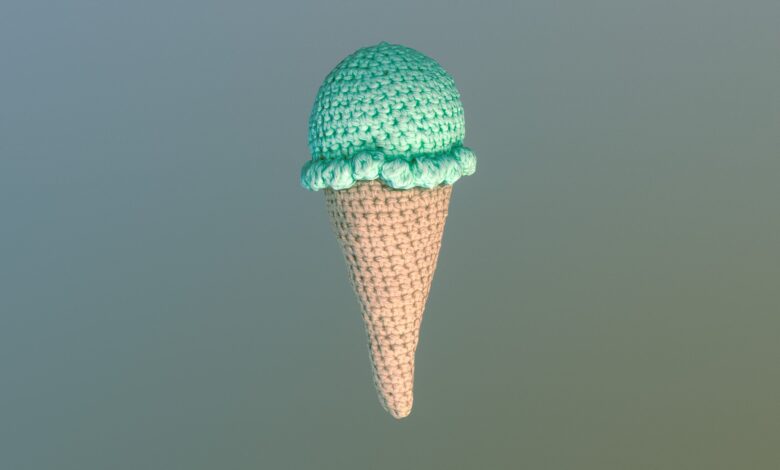
Discover 3D Knitting Machines: The Future of Textiles
3D knitting machines are redefining the landscape of textile manufacturing, enabling a new era of seamless production and sustainability. These advanced knitting machines utilize innovative technology to automate the knitting process, allowing for the creation of intricate designs and garments with minimal waste. As the demand for personalized apparel and sustainable practices grows, 3D knitting presents a compelling solution.
By leveraging the capabilities of automation and digital fabrication, the textile industry can evolve to meet modern consumer needs while reducing its carbon footprint.
What Are 3D Knitting Machines?
3D knitting machines are sophisticated devices designed to produce three-dimensional knitted garments and textiles through a streamlined knitting process. Unlike traditional knitting machines, which often require multiple seams and finishing processes, 3D knitting enables the creation of seamless garments, reducing both labor and material waste.
These machines utilize advanced technology, including computer programming and robotics, to automate the knitting process, allowing for greater precision and efficiency. With capabilities such as wholegarment knitting, 3D knitting machines can produce a single garment in one continuous piece, eliminating the need for additional assembly and enhancing durability.
The Evolution of Knitting Technology: From Traditional to 3D
The evolution of knitting technology has seen a significant shift from traditional methods to modern 3D knitting solutions. Traditionally, knitting involved manual processes that required skilled labor to create garments, often resulting in longer production times and higher costs. The introduction of computer-controlled knitting machines marked the beginning of automation in the textile industry.
However, the advent of 3D knitting technology has revolutionized garment manufacturing by integrating advanced robotics and digital fabrication techniques. This transition not only enhances production speed but also allows for greater customization and flexibility in design, catering to the growing demand for on-demand apparel.
Why 3D Knitting is the Future of Textiles
3D knitting is poised to be the future of textiles due to its numerous advantages in terms of sustainability, efficiency, and innovation. As the fashion industry shifts towards more sustainable practices, 3D knitting machines contribute to zero waste production by using only the required amount of yarn for each garment.
This method significantly reduces excess material and energy consumption, aligning with global sustainability goals. Furthermore, the ability to automate the knitting process enables manufacturers to produce more complex designs and prototypes quickly, enhancing creativity and responsiveness to market trends. The transition to 3D knitting not only supports environmental initiatives but also elevates the overall quality and functionality of knitted apparel.
How Do 3D Knitting Machines Work?
The Role of Automation in 3D Knitting
Automation plays a crucial role in the operation of 3D knitting machines, streamlining the entire knitting process from design to finished product. By utilizing computer software to control the knitting machine, manufacturers can automate functions such as yarn tension, stitch patterns, and needle movements.
This level of automation reduces the risk of defects and inconsistencies, ensuring high-quality output. Additionally, automated systems allow for rapid prototyping, enabling designers to create and test new garment concepts quickly. As a result, businesses can respond to consumer demands more effectively while maintaining cost efficiency.
Key Features of Modern 3D Knitting Machines
Modern 3D knitting machines come equipped with a range of key features that enhance their functionality and versatility. One notable feature is the ability to utilize various yarn types and weights, enabling the production of diverse fabrics and textures. Additionally, many machines incorporate advanced knitting technologies, such as wholegarment knitting, which eliminates seams and allows for more comfortable and durable garments.
Furthermore, modern machines often include integrated CAD software that facilitates easy design customization, enabling designers to create intricate patterns and projects with ease. These features collectively contribute to the efficiency and effectiveness of 3D knitting in the textile industry.
Understanding the Programming: CAD Software Integration
CAD (Computer-Aided Design) software integration is essential for maximizing the potential of 3D knitting machines. This software allows designers to create detailed digital models of their garments, specifying parameters such as stitch types, yarn colors, and garment dimensions. By incorporating CAD into the knitting process, manufacturers can streamline design changes and quickly adapt to market trends.
Moreover, the ability to visualize the finished product before production minimizes the risk of errors and defects. As the industry continues to embrace technological advancements, the integration of CAD software will play a pivotal role in driving innovation within 3D knitting.
Advantages of 3D Knitting in the Textile Industry
Sustainability and Waste Reduction: Zero Waste Production
One of the most significant advantages of 3D knitting technology is its contribution to sustainability and waste reduction in the textile industry. Traditional garment production often results in substantial fabric waste due to cutting and sewing processes. In contrast, 3D knitting machines utilize a wholegarment approach, allowing them to knit garments in a single piece, significantly reducing material waste.
This method not only conserves resources but also promotes a more sustainable manufacturing model. By minimizing excess fabric and energy consumption, 3D knitting aligns with the growing demand for sustainable practices in fashion and apparel, making it an attractive option for environmentally-conscious brands.
Customization and Flexibility: Personalized Garment Production
The ability to customize and produce garments on demand is another key advantage of 3D knitting technology. With the integration of CAD software and automated systems, manufacturers can easily create personalized designs that cater to individual customer preferences.
This flexibility allows brands to respond to trends and consumer demands swiftly, producing limited edition or bespoke garments without large-scale production runs. Furthermore, the seamless nature of 3D knitted garments enhances comfort and fit, as they can be tailored to specific body shapes and sizes. This level of customization not only satisfies customer desires for unique apparel but also reduces the risk of overproduction and unsold inventory.
Cost Efficiency and Time Savings: Streamlining the Supply Chain
3D knitting technology also offers notable cost efficiency and time savings, which are crucial for streamlining the textile supply chain. By automating the knitting process, manufacturers can significantly reduce labor costs associated with traditional sewing and finishing.
Additionally, the ability to produce garments quickly using a single machine minimizes production lead times, allowing brands to bring products to market faster. This efficiency is especially advantageous in the fast-paced fashion industry, where trends can change rapidly. As a result, companies can optimize their operations and improve profitability while meeting the demands of consumers for timely and innovative products.
Seamless Garments for Better Fit and Comfort
Seamless garments produced by 3D knitting technology offer enhanced fit and comfort, setting them apart from traditionally constructed apparel. The lack of seams reduces friction and discomfort, making these garments ideal for activewear and everyday clothing.
Additionally, the precise control over knitting patterns allows for the creation of functional designs that accommodate movement and body contours. This innovative approach not only improves the wearer’s experience but also elevates the overall quality of the garment. As consumer expectations for comfort and performance rise, seamless 3D knitted garments are becoming increasingly popular in the apparel market, showcasing the advantages of this advanced technology.
Applications of 3D Knitting Technology
Fashion Industry: Revolutionizing Garment Design
In the fashion industry, 3D knitting technology is revolutionizing garment design by enabling the creation of intricate and innovative styles. Designers can experiment with complex patterns and textures that were previously challenging to produce using traditional methods.
The flexibility of 3D knitting allows for rapid prototyping, enabling designers to bring their visions to life quickly and efficiently. Additionally, the seamless construction of garments enhances their aesthetic appeal while also providing improved comfort. As fashion brands increasingly adopt 3D knitting technology, they can differentiate themselves in a competitive market while meeting the growing demand for unique and stylish apparel.
Footwear Innovations: From Nike Flyknit to Adidas Primeknit
3D knitting technology has made significant strides in the footwear industry, with major brands like Nike and Adidas leading the charge. Nike’s Flyknit and Adidas’s Primeknit are perfect examples of how 3D knitting can enhance performance and design in athletic footwear.
These innovations utilize seamless, knitted uppers that provide a lightweight and supportive fit, tailored specifically to the wearer’s foot. Moreover, the ability to customize designs and colors allows brands to offer personalized options to consumers. As the demand for high-performance footwear continues to grow, the integration of 3D knitting technology will play a crucial role in shaping the future of the footwear industry.
Sportswear and Performance Gear: Enhanced Functionality
The application of 3D knitting technology in sportswear and performance gear has transformed the way athletes experience their apparel. By leveraging seamless construction and advanced materials, 3D knitted garments can enhance breathability, moisture-wicking properties, and overall comfort during physical activity. Moreover, the precision of 3D knitting allows for targeted support in key areas, improving the functionality of athletic wear.
This innovation not only enhances the performance of athletes but also meets the increasing consumer demand for high-quality, functional sports apparel. As a result, 3D knitting is becoming an essential aspect of the sportswear market, offering superior products that cater to the needs of active individuals.
Medical Textiles: Knitting for Healthcare Applications
The potential of 3D knitting technology extends beyond fashion and sportswear, finding applications in the healthcare sector as well. Medical textiles produced using 3D knitting can offer unique benefits, such as customizable compression garments and wound dressings that conform to the body. The seamless nature of 3D knitted products minimizes irritation and enhances patient comfort, making them ideal for various medical applications.
Additionally, the ability to produce on-demand medical textiles allows for rapid responses to specific patient needs, improving the efficiency of healthcare delivery. As the healthcare industry continues to explore innovative solutions, 3D knitting technology is poised to play a vital role in advancing medical textiles and enhancing patient care.
Leading 3D Knitting Machine Manufacturers
Shima Seiki: Pioneers in Flat Knitting Technology
Shima Seiki is a renowned leader in the field of flat knitting technology, known for its innovative 3D knitting machines. The Japanese company has pioneered advancements in wholegarment technology, enabling seamless garment production that maximizes comfort and reduces waste.
With a commitment to sustainability and efficiency, Shima Seiki continues to push the boundaries of knitting technology, offering solutions that cater to the evolving needs of the textile industry. Their state-of-the-art machinery, combined with a focus on research and development, positions Shima Seiki as a key player in the future of 3D knitting.
Stoll: Innovative German Engineering
Stoll, a prominent German manufacturer, has established itself as a leader in the 3D knitting machine market, offering innovative solutions for various textile applications. With a strong emphasis on engineering excellence, Stoll’s machines are designed to deliver precision and versatility in knitting.
Their advanced technology allows for the production of complex patterns and seamless garments, catering to the demands of the fashion and apparel industries. As sustainability becomes increasingly important, Stoll continues to develop eco-friendly solutions that align with the principles of waste reduction and efficient resource utilization, solidifying its reputation as an industry innovator.
Other Notable Companies: Santoni, Steiger, and More
In addition to Shima Seiki and Stoll, several other notable companies are making significant contributions to the 3D knitting landscape. Santoni is known for its pioneering work in circular knitting technology, allowing for seamless tube-shaped garments.
Steiger, on the other hand, specializes in high-quality flat knitting machines suitable for diverse textile applications. These companies, along with others, are driving innovation in the 3D knitting sector, each offering unique capabilities and features that cater to the specific needs of manufacturers. As the demand for advanced knitting solutions grows, these manufacturers will continue to play a critical role in shaping the future of the textile industry.
The Future of 3D Knitting: Trends and Innovations
Smart Textiles: Integrating Technology with Fashion
The future of 3D knitting is closely tied to the rise of smart textiles, which integrate technology directly into fabric and garment design.
These innovative textiles can include features such as embedded sensors, LED lights, or temperature control, enhancing the functionality of clothing. By combining 3D knitting with smart textile technology, manufacturers can create garments that not only look good but also serve practical purposes, such as monitoring health metrics or adapting to environmental changes. As this trend continues to evolve, we can expect to see a surge of creativity and innovation in the fashion industry, pushing the boundaries of what clothing can achieve.
Sustainable Fashion: Reducing the Carbon Footprint with 3D Knitting
Sustainable fashion is a driving force behind the adoption of 3D knitting technology in the textile industry. As consumers become increasingly aware of environmental issues, brands are compelled to adopt practices that minimize their carbon footprint. 3D knitting machines facilitate sustainable production by reducing waste and energy consumption through wholegarment construction.
This method not only conserves resources but also supports the principles of circular fashion, where products are designed for longevity and recyclability. As sustainability remains at the forefront of consumer consciousness, 3D knitting technology will play a pivotal role in shaping a more responsible and eco-friendly fashion landscape.
The Role of AI and Automation in the Future of Knitting
Artificial intelligence (AI) and automation are set to revolutionize the future of knitting technology, enhancing efficiency and creativity in the production process. By incorporating AI algorithms, 3D knitting machines can optimize knitting patterns and predict consumer trends, allowing manufacturers to respond quickly to market demands. Additionally, automation enables real-time monitoring of the knitting process, reducing the likelihood of defects and ensuring consistent quality.
As the industry embraces these technological advancements, we can expect a more agile and responsive knitting process, paving the way for innovative designs and superior products that meet the evolving needs of consumers.
Challenges and Limitations of 3D Knitting Machines
High Initial Investment Costs
Despite the numerous advantages of 3D knitting technology, high initial investment costs remain a significant challenge for many manufacturers. The sophisticated machinery and advanced software required for 3D knitting can be prohibitively expensive, particularly for small to medium-sized businesses. This financial barrier can hinder the adoption of 3D knitting technology, limiting its potential impact on the textile industry.
However, as the technology continues to evolve and become more accessible, it’s anticipated that the costs will eventually decrease, making it more feasible for a wider range of manufacturers to invest in 3D knitting solutions.
Need for Skilled Labor: Understanding Machine Programming
The need for skilled labor is another challenge associated with the implementation of 3D knitting machines. While automation streamlines many aspects of the knitting process, understanding machine programming and operation is essential for maximizing the potential of these advanced machines. Manufacturers must invest in training and development for their workforce to ensure that operators are equipped with the necessary skills to utilize 3D knitting technology effectively.
This requirement for specialized knowledge can be a barrier to entry for some companies, but it also highlights the importance of ongoing education and skill development in the evolving textile industry.
Potential Limitations in Material Compatibility
While 3D knitting technology offers remarkable versatility, there are potential limitations in material compatibility that manufacturers must consider. Not all yarns and fabrics can be effectively utilized in 3D knitting machines, which may restrict design possibilities and garment functionality.
Additionally, certain materials may not lend themselves well to the seamless construction methods employed in 3D knitting, potentially impacting the durability and performance of the final product. As the industry continues to innovate, ongoing research and development in materials science will be crucial to overcoming these limitations and expanding the range of compatible fabrics for 3D knitting applications.
How to Incorporate 3D Knitting into Your Business
Choosing the Right 3D Knitting Machine for Your Needs
Choosing the right 3D knitting machine is a critical step for manufacturers looking to incorporate this technology into their business. Factors such as production volume, garment complexity, and desired features must be taken into account when selecting a machine. Additionally, it’s essential to consider the compatibility of the machine with various yarns and fabrics to ensure versatility in production.
Conducting thorough research and consulting with industry experts can help manufacturers make informed decisions that align with their specific needs and objectives, ultimately enhancing their efficiency and product offerings.
Building a Sustainable Production Line with 3D Knitting
Building a sustainable production line with 3D knitting technology involves integrating eco-friendly practices at every stage of the knitting process. This includes selecting sustainable materials, minimizing energy consumption, and adopting waste reduction strategies. By utilizing wholegarment knitting techniques, manufacturers can significantly reduce fabric waste and improve resource efficiency.
Additionally, investing in energy-efficient machinery and sustainable sourcing practices will further enhance the sustainability of the production line. As the demand for eco-conscious fashion continues to rise, establishing a sustainable production line with 3D knitting will position brands favorably in the marketplace while contributing positively to the environment.
Training and Skill Development for 3D Knitting Operators
Training and skill development for 3D knitting operators are essential components of successfully integrating this technology into a manufacturing operation. As the complexity of 3D knitting machines increases, manufacturers must ensure that their workforce is adequately trained to operate and maintain these advanced systems.
Providing ongoing education and hands-on experience will empower operators to maximize the potential of 3D knitting technology, leading to improved productivity and product quality. Furthermore, investing in skill development not only enhances the efficiency of the production process but also fosters a culture of innovation and adaptability within the organization.
Conclusion: Why 3D Knitting is the Future of Textiles
In the next few years, 3D knitting is set to revolutionize textiles, as demonstrated by innovations from Carnegie Mellon and Keio University. By utilizing whole garment knitting machines, designers can create a sweater with fewer seams and a superior look and feel, minimizing human error and allowing for complex patterns using a computerized approach.
Experts like James McCann and Oliver Charles advocate for this technology, emphasizing that solid knitting machines and robot integration can unravel traditional methods. With hirose’s advancements, a robotics institute can create solid items that require less energy and fewer seams, enhancing production efficiency.















